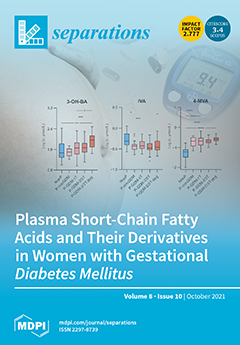Open AccessArticle
Validation and Clinical Application of a New Liquid Chromatography Coupled to Mass Spectrometry (HPLC-MS) Method for Dalbavancin Quantification in Human Plasma
by
Valeria Avataneo, Miriam Antonucci, Elisa Delia De Vivo, Antonio Briozzo, Jessica Cusato, Francesca Bermond, Corrado Vitale, Francesco Vitale, Alessandra Manca, Alice Palermiti, Giovanni Di Perri, Francesco Giuseppe De Rosa, Amedeo De Nicolò and Antonio D’Avolio
Cited by 8 | Viewed by 2235
Abstract
Dalbavancin (DBV) is an intravenous long-acting second-generation glycolipopeptide antibiotic with high efficacy and excellent tolerability, approved for use in the treatment of Gram-positive skin and skin structure infections (ABSSSI). Nevertheless, little is known about its pharmacokinetic/pharmacodynamic (PK/PD) properties in real life, which is
[...] Read more.
Dalbavancin (DBV) is an intravenous long-acting second-generation glycolipopeptide antibiotic with high efficacy and excellent tolerability, approved for use in the treatment of Gram-positive skin and skin structure infections (ABSSSI). Nevertheless, little is known about its pharmacokinetic/pharmacodynamic (PK/PD) properties in real life, which is also due to technical challenges in its quantification in human plasma, preventing an effective application of therapeutic drug monitoring (TDM). In fact, DBV has a high affinity to plasma proteins, possibly resulting in poor recovery after extraction procedure. The aim of this study was to validate a simple, cheap and reliable HPLC-MS method for use in TDM, in accordance with FDA and EMA guidelines. The optimized protein precipitation protocol required 50 μL of plasma, while chromatographic analysis could be performed in 12 min/sample. This method fulfilled the guidelines requirements and then, it was applied for routine DBV TDM in patients receiving off-label high doses (two 1500 + 1500 mg weekly infusions instead of 1000 + 500 mg), with normal renal function or undergoing hemodialysis: continuous hemodiafiltration caused a relevant reduction in DBV exposure, while intermittent dialysis showed comparable DBV concentrations with those of patients with normal renal function. This confirmed the eligibility of the presented method for use in TDM and its usefulness in clinical practice.
Full article
►▼
Show Figures





